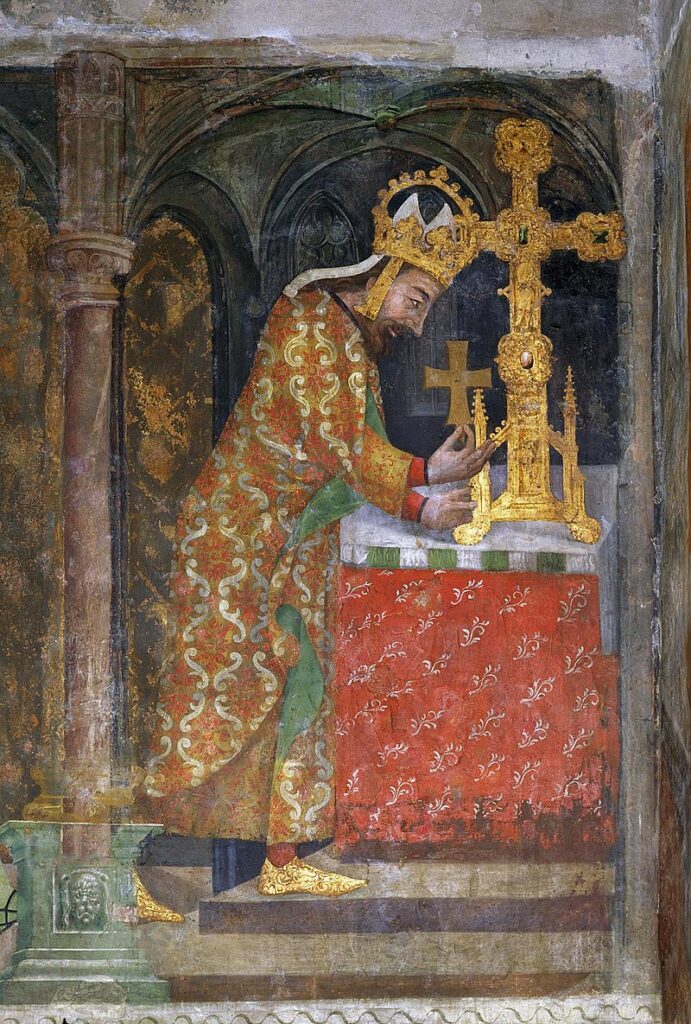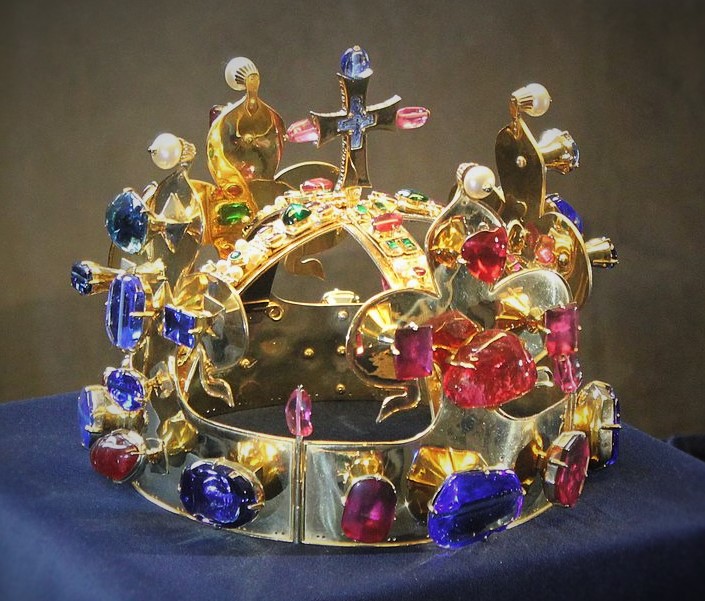Charles IV and the Saint Wenceslas Crown – Prague, Prague Castle – Cathedral
Fact of the Czech figure „Patrons of the Czech Lands – Prague Castle – Cathedral”
Part of the „The patrons and guardians of the land” topic
In the spring of 1346, Charles IV informed Pope Clement VI that he had a crown manufactured and dedicated to Saint Wenceslas. This crown could only be borrowed by the kings of Bohemia for their coronations or significant ceremonies. Fearing that his successors might misuse the crown for iniquities, Charles asked the pope to grant it special protection. Clement complied with the request and on May 6, 1346, he threatened severe penalties, including excommunication, for anyone who dared to pawn or misplace the Saint Wenceslas Crown.
Throughout his reign, Charles IV had the crown modified multiple times, purchasing sapphires, rubies, and spinels with deliberation and refined taste, granting the crown of the kings of Bohemia its unique appearance. It also became a sacral symbol of the Lands of the Bohemian Crown, a conglomeration of territories that survived not only Charles’s death in 1378 but also the Hussite wars and the turbulent 15th century.
The story of the Saint Wenceslas Crown was not over even with the demise of the Habsburg monarchy in 1918. Public opinion and political leaders continued to view the crown as one of the most essential symbols of the newly established Czechoslovak Republic. After the dissolution of Czechoslovakia and the subsequent Nazi occupation in 1939, the crown also attracted the attention of Nazi authorities. The crown was valued even under the communist regime, and its symbolic significance remains intact in the early 21st century.





 Filming Begins for the ReCall Microcourse: Unity and Diversity – Central Europe Through The Centuries (April 2025)
Filming Begins for the ReCall Microcourse: Unity and Diversity – Central Europe Through The Centuries (April 2025)
